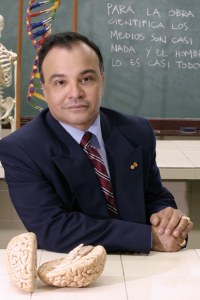
Introduction
Work-related musculoskeletal (MSDs) disorders include all musculoskeletal disorders that are induced or aggravated by work and the circumstances of its performance [1].
Every year millions of European workers in all types of jobs and employment sectors are affected by MSDs through their work. MSD is the most prevalent occupational disease at European level. According to Eurostat figures on recognized occupational diseases (EODS), musculoskeletal disorders are the most common occupational disease with a 39 % of the total occupational diseases [2]. The Fourth European Survey on Working Conditions (ESWC) shows that 35.4 % of respondents in European Union countries consider that their work affects their health. In Spain the percentage is very similar, 36 %. Among the most prevalent health problems it appears the back pain, low and upper limb muscular pains, overall fatigue and stress [3].
In Spain in 2012, 25.438 work-related sicknesses were notified in the PANOTRATSS and CEPROSS registers [4]. Among them, MSDs are one of the leading causes of occupational injury with the. In 2013 the CEPROSS report shows a 4034 of work-related injuries related to locomotor system [5] and 1180 in PANOTRASS register, including the episodes with and without sick-leave [6].
In the region of Aragón, in Spain the industrial sector with the 17,17 % of active workers in 2013 is the second one in number of workers after the service sector. Companies that manufacture metallic products as cars, electrical appliances and derivatives products from these markets employ more than a third of the workers in industrial sector [4].
The ESWC survey shows than in European countries the manufacturing sector is the second in incidence rate of MSDs after fishing [3]. In Spain after construction and public administration, the manufacturing sector presents the highest incidence en musculoskeletal disorders [7].
Musculoskeletal disorder besides the health effect on workers, they also generate an important economic impact on the companies and the social costs to European countries. The cost of MSDs includes direct costs are due to insurance, medical and administrative costs. The indirect costs can be attributed to sick leave costs. In France in 2005 sick leaves caused by MSDs lead to a loss of 6,5 million workdays and a cost of 650 million euros [8]. In Germany an estimation of costs of musculoskeletal diseases establishes a 95 million days lost and 23,9 billion euros [9]. An study developed in Nederland [10] showed a total yearly costs due to MSDs of 2,1 billion euros. The productivity loss generates a cost almost similar than the cost due to sickness absence.
Among the risk factors of the MSDs we could find the heavy load handling, awkward positions to accomplish task and repetitive movements [11]. Repetitive work is the most common risk factor for the development of MSDs in the European Union countries, with a 61,5 % of the workers reporting the exposure to repetitive hand or arm movements at least a quarter of the working time.
Our aim in this study is to describe the sickness absence for MSDs in line-workers of two manufacturing plants of electrical appliances of Spain, studying its incidence, identifying the characteristics of the workers that suffer from sick-leaves due to MSDs. The results of this study will help to develop strategies of actuation in order to reduce the sickness absence for MSDs in these manufacturing plants, identifying the more incident pathologies and the working areas with more episodes registered.
Material and Methods
Population
A very important manufacturing company of electrical appliances located in Zaragoza, Spain was object of this study. The research was developed on two plants of the company: plant 1 that manufactures ovens and induction stoves, and plant 2 that produces washing machines.
Study design
A cross-sectional study was developed to assess the incidence of the MSDs. The data were obtained from the company’s sick-leaves registry for a five-year period from the beginning of 2010 to the end of 2013. Work-related illness, common disease and workplace accident cases were registered. In case of workers with several episodes of sickness absence in a year, a unique case was taken into account. Only the sick-leaves that begin during the year of study were collected.
Outcomes
From every diagnosis, the number of workdays lost by sick-leave was registered besides the type of pathology, the working area of the manufacturing plant, the age and sex of the worker. With these data, annual incidence rates were calculated by gender, age, diagnosis and working area.
Statistical Analysis
The mean and standard deviation of the variables analyzed were calculated. Also the incidence rate of episodes and accumulate incidence for a four-year period were obtained. Excel 2010 package software was used to analyze the data and to elaborate the figures.
This study respects the directives of Helsinki declaration and has been approved by the ethical commission of the University San Jorge.
Results
In the manufacturing company analyzed, between 2010 and 2013, there was a follow up of 3445 workers in plant 1 and 1041 in plant 2 (Table 1). The plant population distribution by gender during the period of study was 63,2 % of men and 36,8 % of women in plant 1 and 82,3 % of men and 17,7 % of women in plant 2.
|
Columna1 |
Plant 1 |
Plant 2 |
||
|
Year |
Men |
Women |
Men |
Women |
|
2010 |
735 |
431 |
308 |
57 |
|
2011 |
723 |
413 |
303 |
51 |
|
2012 |
716 |
426 |
269 |
55 |
|
2013 |
866 |
502 |
301 |
74 |
|
2010-2013 |
3040 |
1772 |
1181 |
237 |
Table 1. Number of workers between 2010 and 2013 in plant 1 and plant 2
The number of sick absence episodes registered during the studied period due to MSDs is shown in Figure 1. The total number of sick-leaves between 2010 and 2013 was 914 and 315 for plant 1 and plant 2 respectively.

Figure 1. Sick-leaves due to MSDs between 2010 and 2013 in plant 1 and plant 2
The sum of the working-days lost for MSDs between 2010 and 2013 was of 30818 and 9181 days for both plants respectively. The mean duration on the leaves was of 33,72 (61,44 SD) days in plant 1 and 29,15 (50,52 SD) days for plant 2 (Table 2).
|
Plant 1 |
Plant 2 |
|||
|
Year |
Sum |
Mean (SD) |
Sum |
Mean (SD) |
|
2010 |
7909 |
30,30 (56,12) |
3740 |
37,70 (62,3) |
|
2011 |
10053 |
33,96 (61,76) |
2561 |
29,12 (50,6) |
|
2012 |
7496 |
41,19 (67,74) |
1392 |
25,90 (45,96) |
|
2013 |
5360 |
30,63 (44,51) |
1488 |
22,05 (35,97) |
|
2010-2013 |
30818 |
33,72 (56,12) |
9181 |
29,15 (50,52) |
Table 2. Sum, mean and standard deviation of working-day lost by MSDs sick leaves
The total number of working-days lost by worker by year considering the four-year period was of 6,4 day/worker in plant 1 and 6,47 day/worker in plant 2.
The mean age of the workers that suffered from a work-related illness taking into account the four-year period was 39,86 and 47,27 years in plant 1 and plant 2 respectively. The mean age and standard deviation by gender, plant and year was calculated (Table 3).
|
Age Mean (SD) |
|||||||
|
Plant 1 |
Plant 2 |
||||||
|
Year |
Women |
Men |
Total |
Women |
Men |
Total |
|
|
2010 |
37,62 (6,59) |
41,76 (8,86) |
40,02 (8,23) |
36,8 (6,07) |
51,31 (11,32) |
48,49 (11,96) |
|
|
2011 |
36,15 (5,63) |
41,81(8,84) |
39,31 (8,08) |
35,2 (5,27) |
48 (11,77) |
46,18 (11,94) |
|
|
2012 |
39,20(6,81) |
42,10(9,99) |
40,88 (8,89) |
39 (5,16) |
47,62 (13,69) |
46,79 (13,34) |
|
|
2013 |
37,05 (5,11) |
41,24 (8,59) |
39,42(7,56) |
36,9 (3,2) |
50,86 (10,84) |
47,54 (11,27) |
|
|
2010-2013 |
37,36 (6,16) |
41,75 (9,04) |
39,86 (8,22) |
36,71 (4,96) |
49,44 (11,95) |
47,27 (12,06) |
|
Table 3. Mean age and standard deviation by gender, plant and year
The distribution of the sick leaves by gender, year and plant was also registered (Figure 2).

Figure 2. Distribution of the MSDs sick leaves by gender, year and plant
The distribution of the sick-leaves by working area dependent of the plant due to the fact that both plants produce different electronic appliances and the work is organized in areas according to the production process. The number of sickness absence episodes is distributed by working area in both plants considering the areas with the maximum number of cases (Table 4).
|
Plant 2 |
Plant 1 |
|||
|
Working Area |
Nº sick-leaves |
Working Area |
Nº sick-leaves |
|
|
Assembly |
235 |
Assembly |
486 |
|
|
Presses and sheet |
29 |
Assembly: ovens |
105 |
|
|
Des. N. Product G11 |
5 |
Assembly induction |
70 |
|
|
Maintenance |
14 |
Anamelling |
65 |
|
|
Anamelling |
13 |
Storage |
16 |
|
|
Quality production |
5 |
Press and Veneers |
57 |
|
|
Others |
75 |
Others |
115 |
|
|
TOTAL |
376 |
TOTAL |
914 |
|
Table 4. Sick-leaves by working area in plant 2 and plant 1
In reference to the pathologies distribution among the MSDs sick-leaves in plant 1 the 27 % of the cases corresponded to lumbar spine pathologies, the 26 % to cervical spine and the 18 % to upper extremity. Most of the pathologies were located in the back (Fig. 3).

Figure 3. Distribution of the MSDs by pathologies in plant 1
In plant 2, the lumbar spine pathologies represented el 28 % of the total of sick-leaves by MSD, followed by upper extremity with 20 % of the cases and the lower extremity in third place with a 16 % of the sick-leaves (Fig. 4).

Figure 4. Distribution of the MSDs by pathologies in plant 2
Calculating the incidence rate of sickness absence due to MSDs for both plants in the different years studied, this parameter was calculated for men, women and the total of workers for every year (Table 5). The accumulated incidence for the period over study between 2010 and 2013 was obtained giving a value of 18,99 % in plant 1 and 22,21 % in plant 2.
|
Incidence rate (%) |
||||||
|
Plant 1 |
Plant 2 |
|||||
|
Year |
Men |
Women |
Total |
Men |
Women |
Total |
|
2010 |
18,78 |
28,54 |
22,38 |
24,03 |
31,58 |
25,21 |
|
2011 |
21,58 |
33,90 |
26,06 |
25,08 |
21,57 |
24,58 |
|
2012 |
13,97 |
19,25 |
15,94 |
20,82 |
9,09 |
18,83 |
|
2013 |
11,55 |
14,94 |
12,79 |
18,27 |
27,03 |
20,00 |
Table 5. Incidence rate of sickness absence due to MSDs by year, gender and plant
Discussion
The sickness absence by MDSs episodes in plant 1 and plant 2 present a considerable incidence although a decreasing trend in the number of cases is detected in the period studied. The incidence of MSDs for women is higher in plant 1 than in plant 2 although the number of episodes is lower. About the pathology, the most incidence one is the low back pain followed by cervical pain and the upper extremity injuries. In both plants, the working areas of assembly collect most of the sick-leaves by MSDs episodes.
Although sick-leaves produced in the manufacturing plants studied could be considered large in number (914 and 315 for plant 1 and plant 2 in the four-year period), the figures in Aragon in 2013 shows 285 disease reports due to MSDs by professional sickness registers CEPROSS [5] and 469 sick-leaves by PANOTRASS register [6]. In Spain the number of episodes due to musculoskeletal disorders was 548 working-related illnesses in manufacturing companies and 684 cases by PANOTRASS register.
The sectors with the highest prevalence of MSDs reported in Spain are construction and public administration. The third sector with remarkable prevalence of MSDs is the manufacturing with a 37,1 % of prevalence of back pain reported [7]. These figures are higher than the found in the research due to they consider surveys done to the workers therefore it collects disorders that end in a sick-leave and others with no sick-leave associated.
The mean age of the episodes of sick-leaves in plant 1 (38,86) and plant 2 (47,27). At time to analyze these data it must be consider that the workers of this company are relatively young. In Spain the prevalence of MSDs increases with age until the 40-54 [7].
In this research the number of working-days lost by sickness absence was in 2013, 5360 days in plant 1 and 1488 days in plant 2. In mean, every worker that takes sick-leaves lost 30,63 days in plant 1 and 22,05 days in plant 2. According to CEPROSS in 2013 [5], the mean duration of work-related illness episodes was of 55,8 days in Aragón.
Figures from several countries of European Union demonstrate an increasing impact of musculoskeletal disorders on costs. In France in 2006, seven million workdays were lost by MSD disorders [3]. Analyzing the Spanish survey [7],
Studying the difference between men and women in incidence rate of MSDs, in the plants over study it can be seen in the last year a higher incidence in women in both plants, 14,94 % vs. 11,55 in plant 1 and 27,03 vs. 18,27 % in plant 2. In contrast to the data found in this study, information from the European Survey on Working Conditions in Spain reports a slightly higher prevalence of MSDs among men than women [7]. However, women are more segregated in specific sectors and occupations. Analyzing the situation of women in European countries in manufacturing sector it seem that women report higher rates of musculoskeletal health problems [3].
According to the diagnosis, low back and cervical back disorders are the most incident problems between the workers. Studying the National Survey of Working Conditions in Spain [7], it can be observed an upward trend in low back pain disease registered in the surveys with a 40,9 % over total workers in 2003. In manufacturing sector, the body part more affected is the low back pain with the 38,6 % of the episodes in 2007.
The working-areas with the higher number of sick-leaves correspond to the assembly posts in both plants. In this area repetitive work with low loads is done by the workers many times per day. Results found in the ESWC [3] shows that the 37,6 % of the workers in plant, machine and assembly suffer from MSDs, a higher figure than other working-areas.
In this study only the sickness absence has been analyzed, not considering the medical consultations by MSDs done to the medical office of both plants. These data would complete this study since not all the injuries have a sick-leave associated. Moreover, the personal opinion of workers by means of questionnaires of MSDs as the Nordic Questionnaire [11] should be considered. Also the odds ratio of the gender, age, working area and pathology should be analyzed in order to obtain causality estimations.
Future studies will focus on an evaluation of the subjects and the working posts with higher incidence detected in this research, analyzing the risk factors of MSDs during the working day in order to establish a relationship between the work and the MSDs. Also preventing interventions aimed at the reduction of MSDs for the more incidence pathologies will be applied for the population over study.
Acknowledgement
This study has been done in the framework of the Cathedra BSH/MAZ and USJ “Empresa Sana”.
Conclusions
Musculoskeletal disorders are the most common prevalent occupational disease in Europe and in Spain. The situation of the sickness absence in two plants of a manufacturing company has been studied, showing that MSDs present a high incidence. Among the MSDs, low back and cervical pathologies are the most frequent diseases. According to the working areas, assembly zone gathers in both plants most of the sickness absence cases. The preventions policies must go to reduce the demands of the work-load over the back, analyzing ergonomically the working post of the assembly areas of both factories of the company.
References
1. World Health Organization, Protecting Workers' Health Series No. 5, Preventing musculoskeletal disorders in the workplace. 2003.
2. European Occupational Diseases Statistics (EODS) – Phase 1 methodology. Eurostat working papers. Population and social conditions 3/2000/E/No 19. Reference metadata on occupational diseases, compiling agency: Statistical Office of the European Communities (Eurostat).
3. Irastorza, E.S.a.X., OSH in figures: Work-related musculoskeletal disorders in the EU —Facts and figures, in EUROPEAN RISK OBSERVATORY REPORT2010, European Agency for safey and health at work.
4. Observatorio de enfermedades profesionales (CEPROSS) y de enfermedades causadas o agravadas por el trabajo (PANOTRATSS). Informe anual 2012, O.d.l.c.p.d.l.S. Social, Editor 2013, Ministerio de Empleo y Seguridad Social: Madrid. p. 97.
5. Enfermedades profesionales (CEPROSS). 2013; Available from: http://www.seg-social.es/Internet_1/Estadistica/Est/Observatorio_de_las_Enfermedades_Profesionales/cepross2k11/index.htm.
6. Patologías no traumáticas (PANOTRATSS). 2013; Available from: http://www.seg-social.es/Internet_1/Estadistica/Est/Observatorio_de_las_Enfermedades_Profesionales/panotratss2k11/index.htm.
7. Mercedes Tejedor, O.F., Annex to Report: Work-related musculoskeletal disorders –Facts and figures National Report: Spain, in European Risk Observation Report2010, European agency for safety and health at work.
8. Plan santé au travail 2005-2009. Ministère du Travail, des Relations sociales, de la famille et de la solidarité. 2005; Available from: http://www.travail-solidarite.gouv.fr/IMG/pdf/PST.pd.
9. Sicherheit und Gesundheit bei der Arbeit 2006; Available from: http://de.osha.europa.eu/statistics/statistiken/suga/suga2006/suga_2006.pdf.
10. al., B.B.e. Gezondheidsschade en kosten als gevolg van RSI en psychosociale arbeidsbelasting in Nederland.TNO Quality of Life. Study commissioned by the ministry of Social Affairs and Labour. 2005; Available from: http://docs.szw.nl/pdf/129/2006/129_2006_3_8656.pdf.
11. W, I.J., D. Molenaar, and A. Burdorf, Different risk factors for musculoskeletal complaints and musculoskeletal sickness absence. Scand J Work Environ Health, 2004. 30(1): p. 56-63.
Papers relacionados














